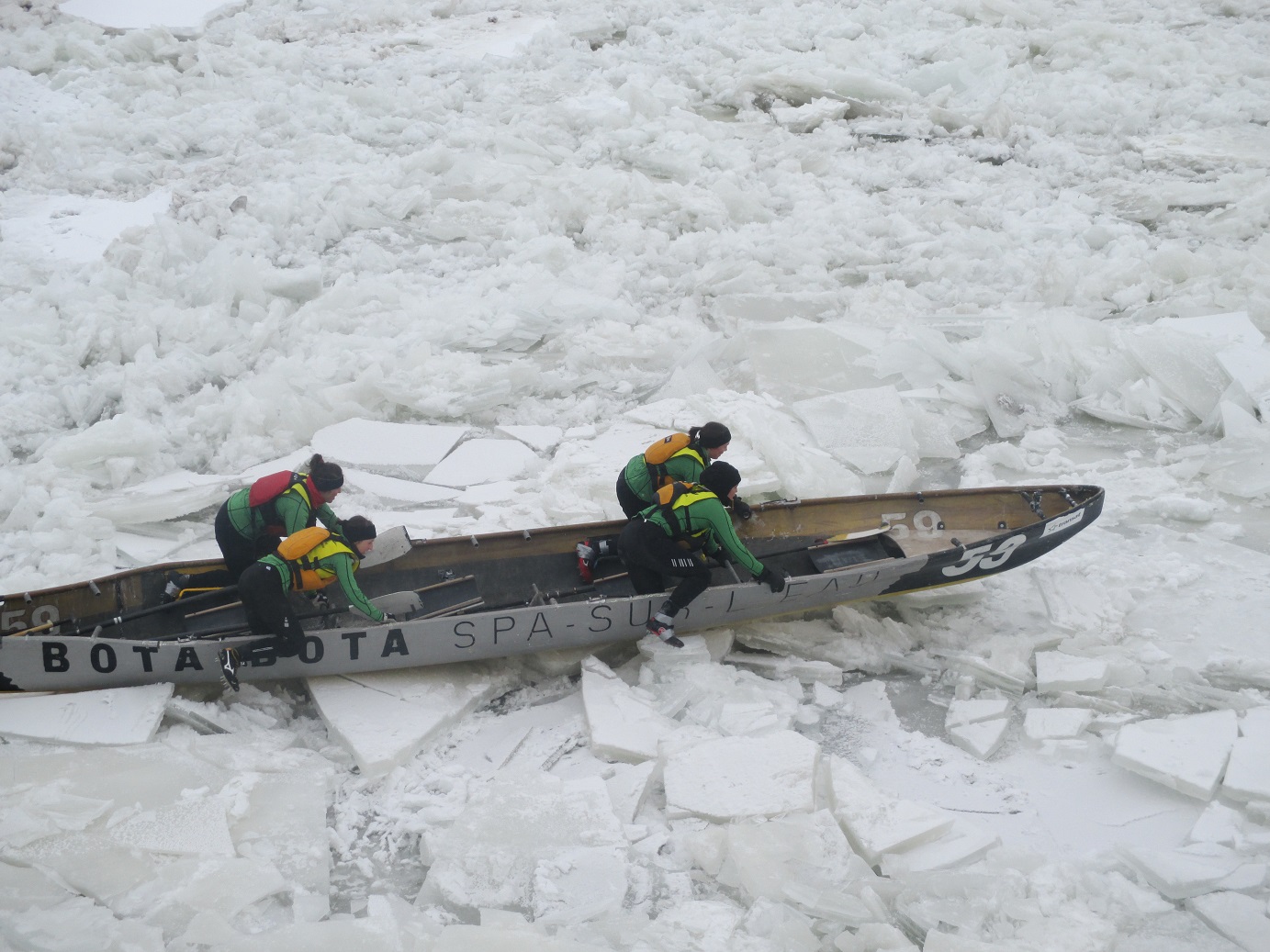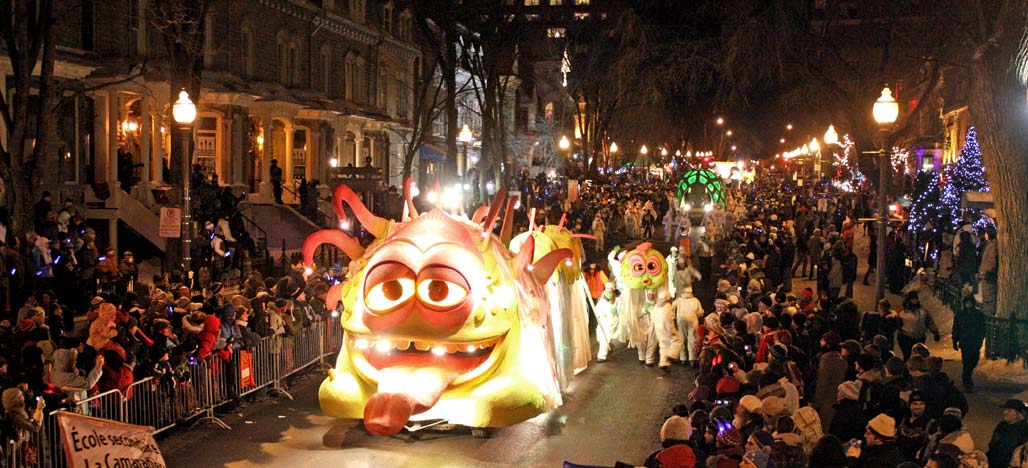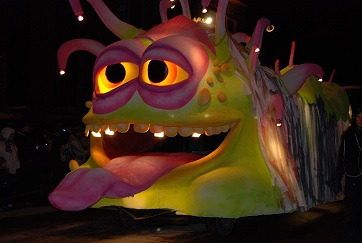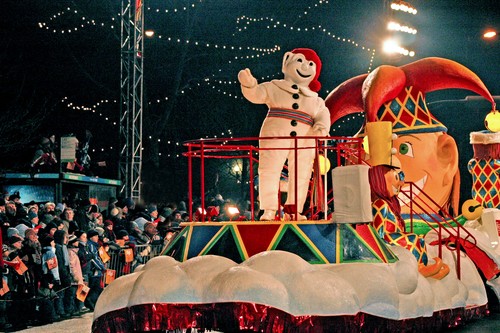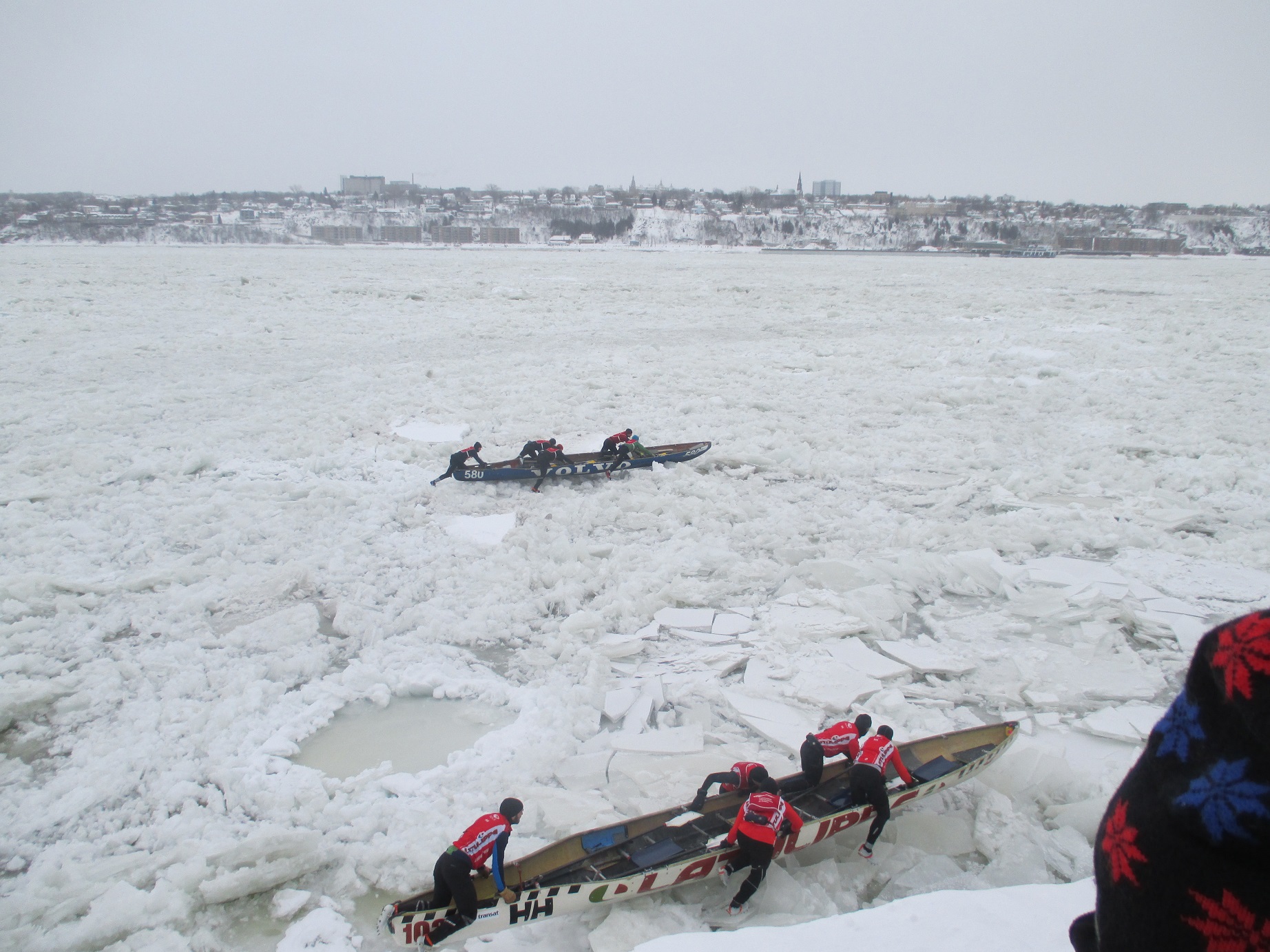
Two crews in the elite male class compete in the ice canoe race on the St. Lawrence River. (Photo by Marlene Greer)
By Marlene Greer, Correspondent
Standing on the edge of the St. Lawrence River watching a group of five women power their canoe over the ice-crusted surface, all I could think of was, “You go, ladies!”
The women are among the 10 teams of elite female crews competing in the ice canoe race, one of many events and competitions at the Winter Carnival in Quebec City. In addition to the women, there are 10 teams in the elite male class, and a whole lot of brave souls in the amateur sport class. (I stopped counting at 25 boats.)
From where we stand near the starting line, we can hear the canoes coming before we see them. We hear the voices of the crew, but mostly we hear the scraping of boats over ice. The ice on the river is broken up in huge blocks, and navigating them takes great physical effort and group coordination.
Wearing spiked shoes, holding on to the gunwale, and kneeling on one knee in the boat with the other leg dangling over the edge, the crews propel their canoes up and over the chunks of ice. The crews do this for half a mile up river before reaching flowing water where they jump in and start paddling.
For today’s race, the temperature is in the single digits, sinking into sub-zero with the fierce wind blowing across the river. But the cold weather doesn’t keep bundled-up spectators from lining the riverbank, four and five deep. Nor, apparently, does it bother the racers.
When I marvel at the utter craziness of it all, a native Quebecer standing next to me counters, “I’ve done it once; it’s a lot of fun!”
The ice canoe race is a carnival staple. It’s been held every year since the carnival’s inception in 1955. The first women’s team participated in the race in 1966. The race begins in Quebec City, and teams navigate a course across the river to Levis and back. The elite male class must complete the circuit twice.
So why a canoe race on a frozen river? According to the Quebec City Tourism website, carnival competitions were created to represent Quebec winter traditions. The canoe, dogsled and sleigh are traditional modes of transportation and were important to the settlement and history of Quebec.
Quebec’s winter carnival ends today with the sleigh races and the closing ceremonies.

